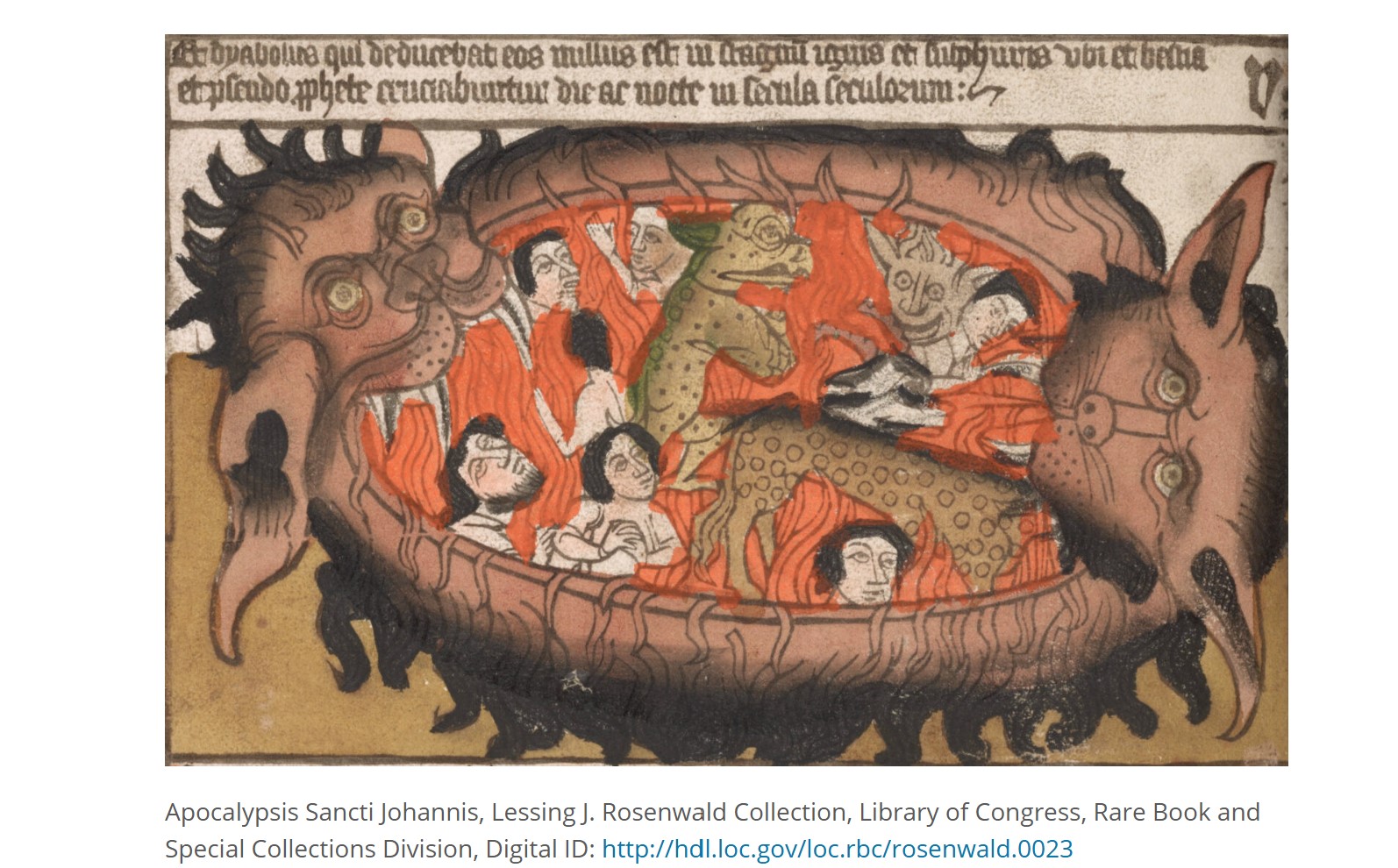Medieval Funeral Directors, Hellmouths, and Churchyards
Before cemeteries had gates and grave liners, the dead were protected from hell itself.
This was necessary because Medieval Europeans believed that hell’s many front doors were literally all over creation, apt to crack open and release the sounds of the gnashing of teeth and a fug of sulphurous smoke anywhere, without warning.
At the time, society was lurching along in the long dark era between the fall of Rome and the rise of anything resembling a secular order. The Catholic Church ran the show, especially when it came to death. Funerals were the Church’s domain.
Burials had to happen in sanctified ground, near an altar. All of the funeral directors of the age were clergy: they administered last rites, oversaw burial in consecrated ground, and performed the Requiem Mass to safeguard the soul’s passage. The authority of the rites and the priest performing them blocked demonic claims on the dead and closed spiritual loopholes.
The rites were armor, and the churchyard, a boundary. Prayers and paid masses continued after burial for the weeks, months, or years to protect souls making their way through purgatory. Medieval death care workers managed logistics, held space for grief, and stewarded the transition between life and whatever came next, like same as today. If you were unlucky enough to be snatched by something crawling out of a Hellmouth, you were done for. Your soul belonged to the devil.
Today the legal system serves the purpose that was once the purview of the church. Instead of officiating clergy we have zoning laws, crematory permits, and full-time funeral directors with no religious prerequisites. But, you know, is this really the best idea?
Are we sure those Hellmouths aren’t still out there, creaking open every now and then to quietly spew disfigured angels of darkness with their rancid brimstone underworld stench high into the air, belching freely forth with unrestrained abandon to run amok with their creepy bat wings hanging out because all the gatekeepers are gone?
It would explain a lot.
What’s a Hellmouth, exactly?
These dreaded “Hellmouths” were, for the most part, primarily artistic representations. Everyone believed there was a Hellmouth under every churchyard as well as elsewhere, but the only ones to be seen were renderings.
They’re remarkably similar, these representations: monsters with gaping orifices for mouths, like a giant manhole with the cover removed. They were typically stuffed with the worldly bodies of the damned: like a bullfrog cramming its mouth with insects, only a gargoyle sort of thing instead of a frog, and instead of bugs human limbs and hair and grimaces poke out in all directions.
The images might sound more comical than terrifying now, but they were meant to be chilling reminders of Hell’s ever-present threat to the salvation of the Medieval soul. As art, they were everywhere at the time: in church carvings, in stained glass, in handwritten Bibles and literature of various forms, even on mappa mundi. Some breathed fire. Some gaped silently. But they all served the same purpose: to remind the living that the boundary between worlds was thin, and damnation had long, ugly teeth.
Maybe the funeral director’s job description doesn’t include a Requiem Mass anymore, but try to find a graveyard without a few angels (the non-horrifying kind). Someone still has to stand between the living and the void. Someone still has to know what to do with the body, what forms to file, what space to consecrate… if not in the spiritual sense, then at least in the zoning-compliant one.
And just in case, it’s probably for the best that someone’s still watching the ground.




